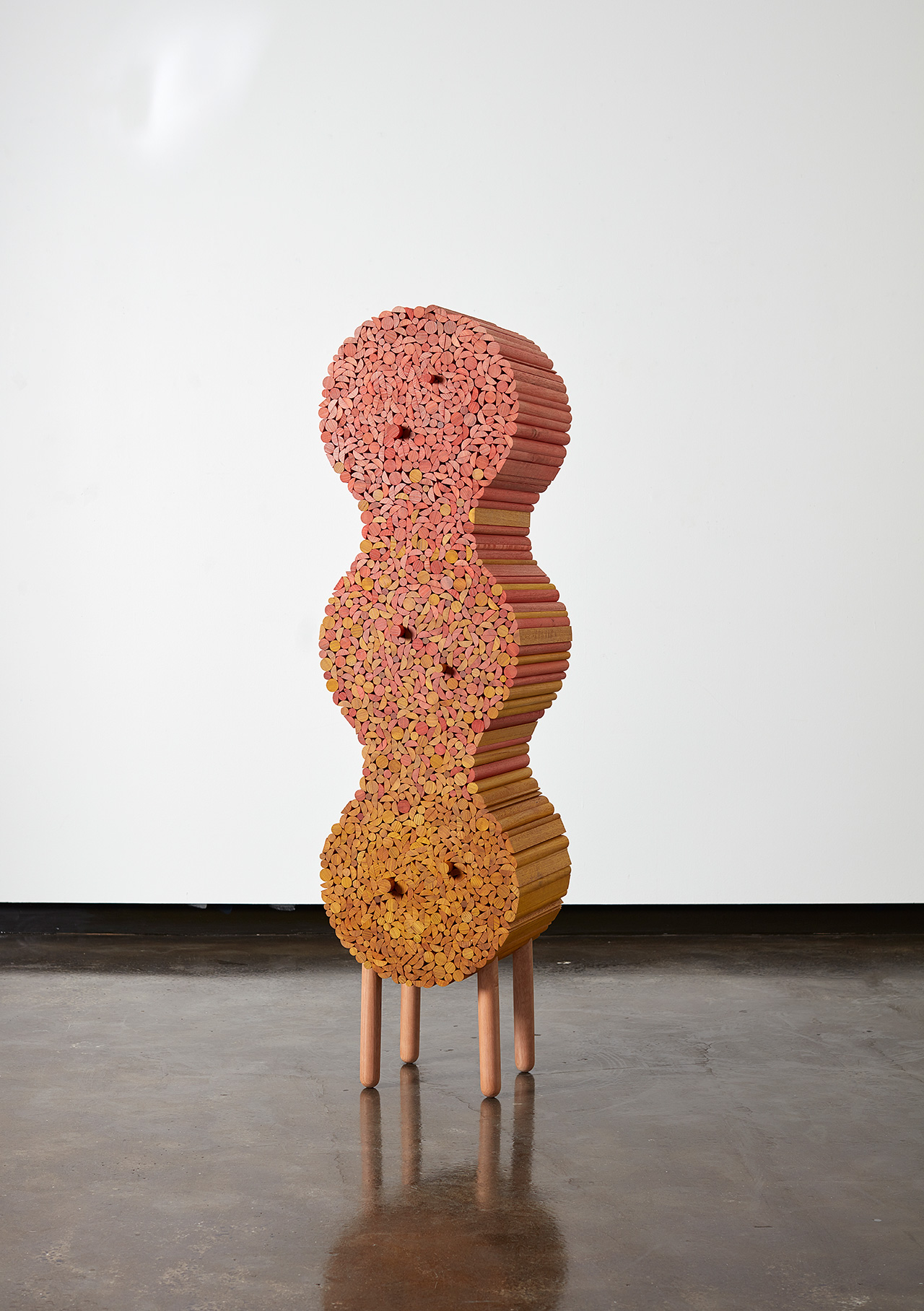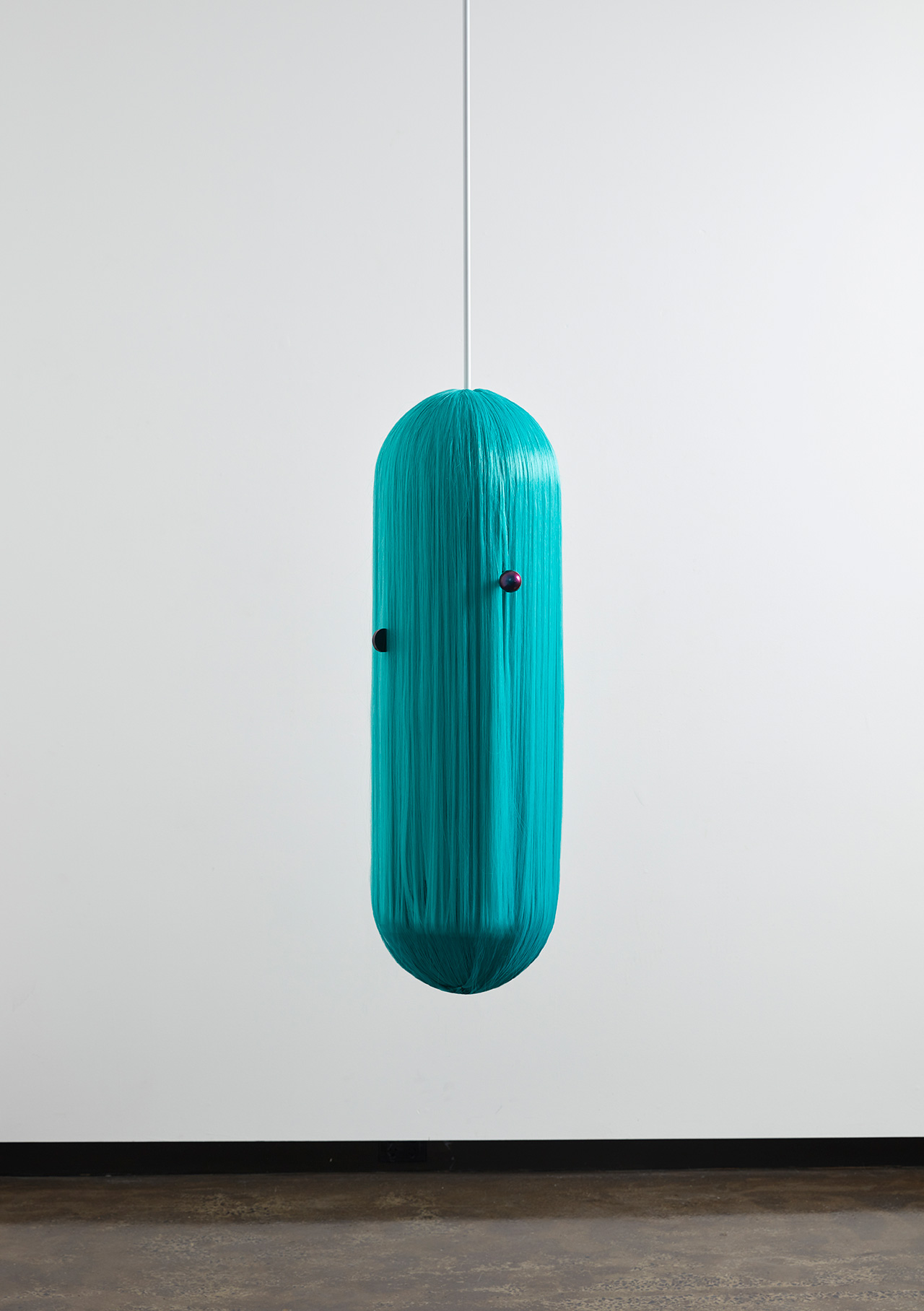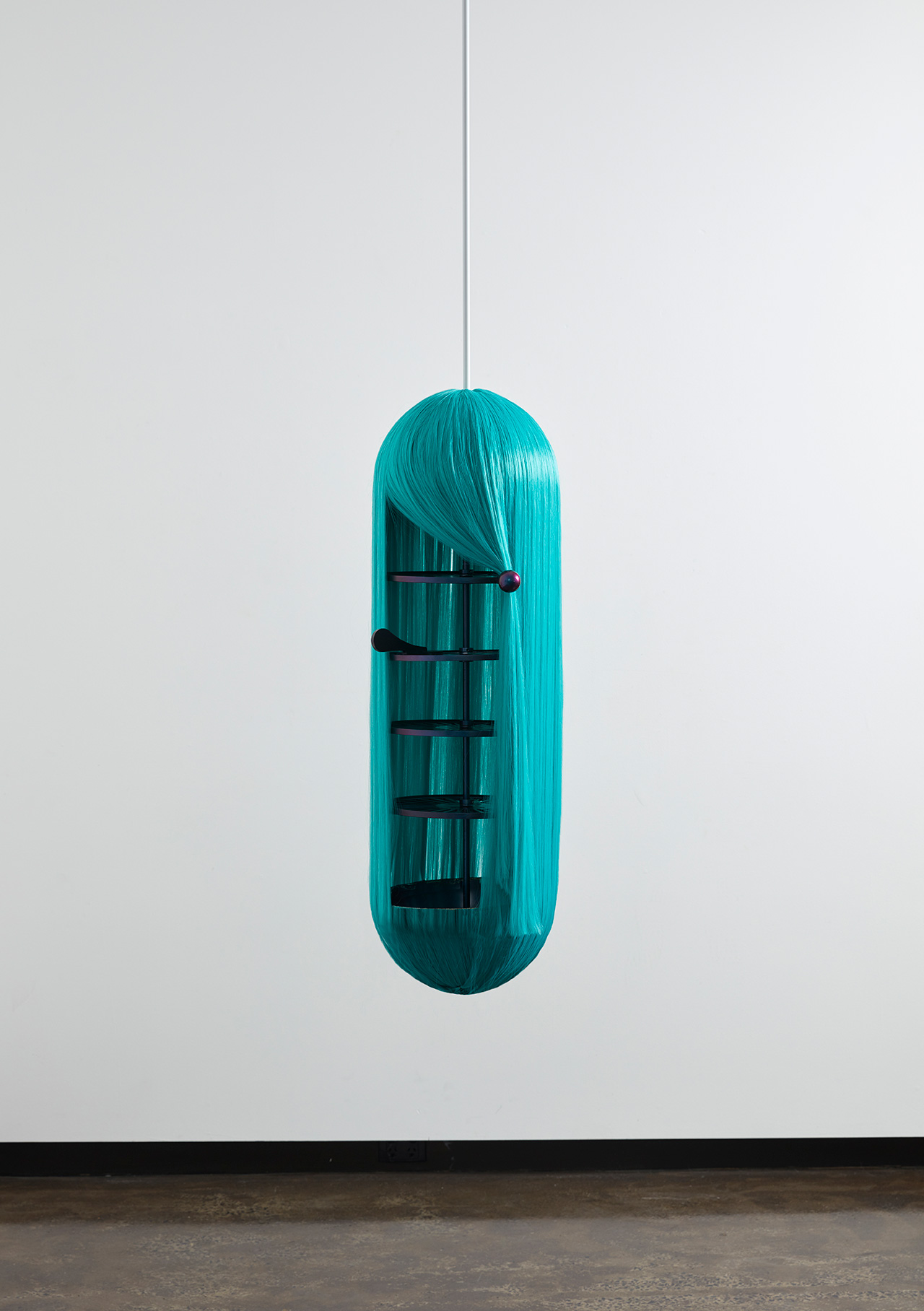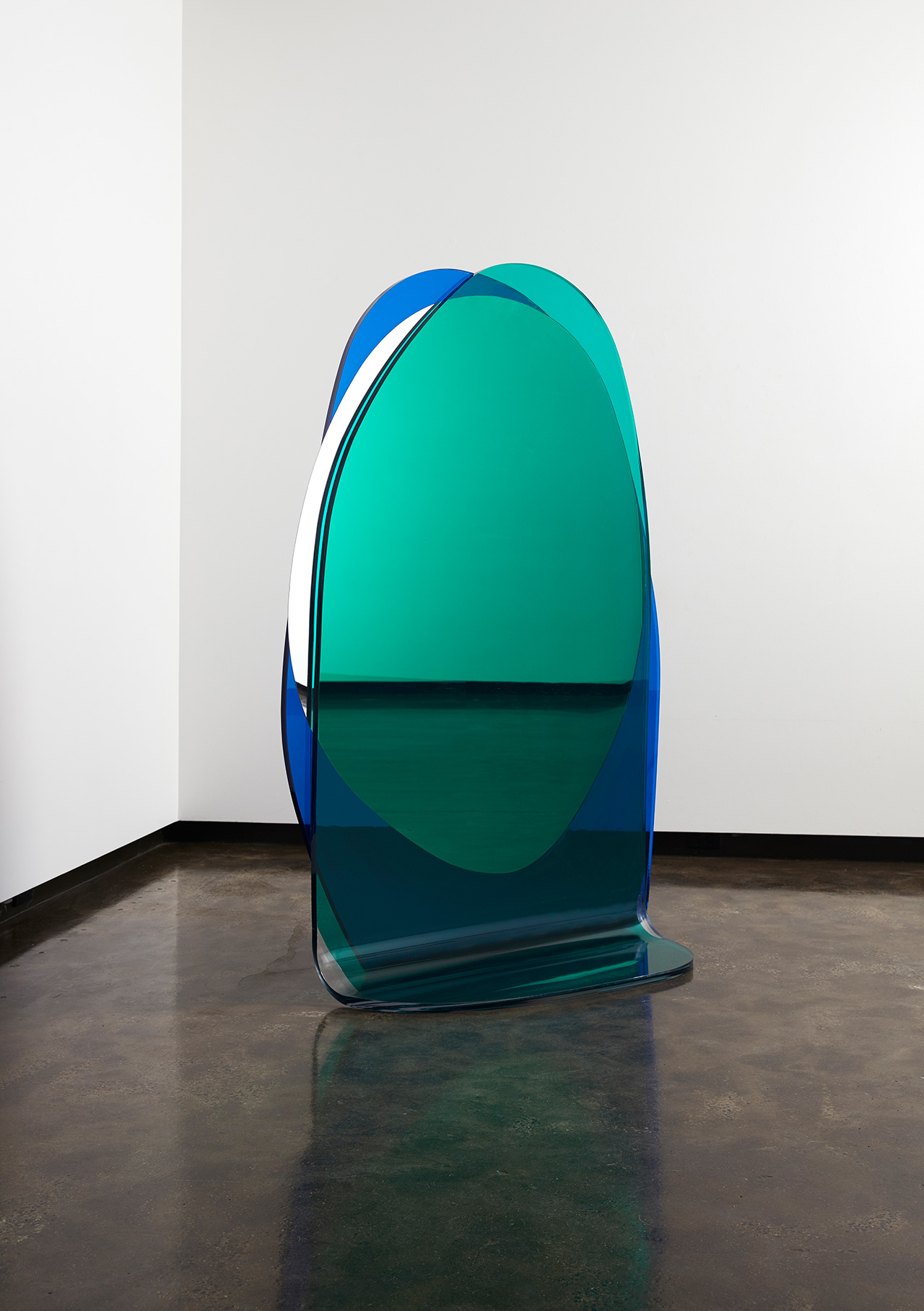News feed
Though Weaver has long been gestating within Elliat Rich, today is the first day that she has seen it, touched it, in the flesh. What Weaver is, however, evades easy categorisation.
“This is slightly difficult for me to talk about”, Rich declares by way of warning as we approach the suspended form, part extenuated legume and part candy-coated chrysalis. “You’re not meant to touch it, but touch it,” Rich implores. “It’s so beautiful. It’s lovely,” she says, parting a curtain of synthetic fibre to reveal its glistening insides. “This is the Weaver.”
The Weaver began, as most things do, with an idea that turned into a sketch, and a sketch that turned into a rendering. That was by far the easiest part, says Rich. The hard work began when it came to finding someone with the nous and, perhaps more importantly, the courage to bring Weaver to life. “Half a dozen people said, ‘Oh, no I don’t do that’,” Rich recalls. “I [said], ‘Yeah, nobody does this, but could you do it?’” Weaver is the culmination of a great deal of work undertaken in collaboration between Rich, an Alice Springs-based multi-disciplinary designer, the burlesque costume and set designer Bryn Meredith and the industrial designer George Gelagotis, and the hand of each is readily discerned in its finished parts. To create the work, Rich conferred with Meredith and Gelagotis, both Melbourne-based, through email and over FaceTime, trading insights into manufacturing details and conveying the intricacies of materiality through the digital ether right up until the moment that Rich and I find ourselves in.
“I knew the feel that I wanted, but I was never there to actually feel it,” Rich says as she instinctively performs the gesture that first inspired Weaver, tucking an errant strand of ice blonde hair back behind her ear. “It’s really quite intimate [that gesture]. It’s like having this relationship with this sculpture furniture that has a presence and a personality.” Standing before it now and marvelling, as she has done for much of the morning thus far, Rich is still coming to terms with the fact that both Weaver and a second, separate body of work being exhibited alongside it are not only real, but beautiful and challenging in ways that couldn’t have been imagined.
Weaver is both a cabinet of curiosity and a sculpture in equal measure. In a very practical sense, Weaver is a cylindrical shelf suspended from the ceiling that is sheathed in a curtain of turquoise synthetic fibre – the kind which is used in wigs. Inside, four shelves are coated in pearlescent chameleon paint that glitters, becoming iridescent as the light falls on it. The invitational tactility of its shape, the unexpected weight of the curtain of hair and the verisimilitude of the synthetic material is near irresistible. Its magnetic qualities are amplified by the practical utility of the piece and its alien allure is heightened by the familiarity of the gesture that inspired it – the hair of curtain begging to be pulled back and affixed behind a metallic ‘ear’.
If you were fond of drawing cinematic parallels, in its shape, colour and spirit the Weaver inadvertently invokes The Matrix’s red pill/blue pill quandary. Where the choice of the blue pill in that scenario would ensure a life of insensate complacency following its ingestion, Elliat Rich’s Weaver’s vivid capsule form invites us to consider the possibilities of brighter, more hopeful future navigated toward with the aid of design that anchors us to the people, places and events that matter to us most. “This is the beginning of a body of work exploring ways of being in the future,” Rich tells me, admittedly still feeling her way toward what that will look like with every utterance. “I really feel as designers that we have this amazing opportunity to inspire visions of the future. At the moment there’s this dark, dystopic [idea] that the future is dark and that technology is going to kill us. There are very few beautiful visions of the future that give us [hope] and instructions or a clear vision of where we can go.”
If the body of work that Rich will propagate from Weaver is about using design as a way of storytelling and a means of navigating toward the future, it’s a fascinating exercise to imagine not only what other pieces could look like, but what that vision for the future entails more holistically. Where is this work set? What else is around it? All of which is not to say that Rich has the answers, rather that she feels as though anybody working in a creative field has within them the innate potential to make startling propositions that can in turn lead to collective consensus.
“You want to inspire people [to think], ‘The future is linked to now. We don’t know what it looks like but it’s exciting to think about and we’re all going to get there together and it’s going to be great.’”
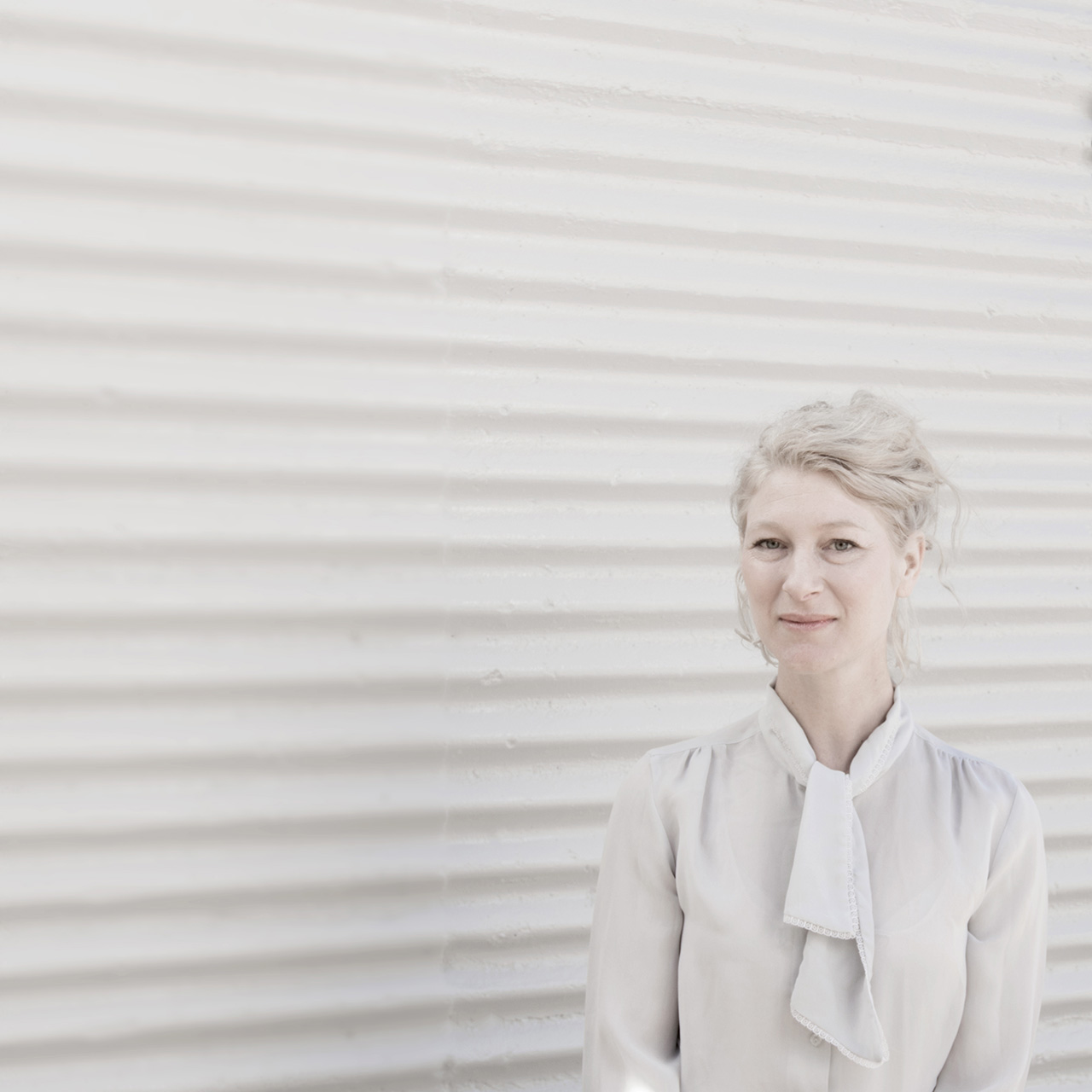
It’s perhaps trite though nonetheless true to say that for Rich the journey is just as important as the destination. Time and place, whether immediate or prospective, are integral to her design practice. “Elliat Rich’s work is about understanding and valuing places and [revealing] the material of landscape,” says Ewan McEoin, Senior Curator of the Contemporary Design and Architecture Department at the National Gallery of Victoria. “[She] is very much a designer who is in central Australia, so you get a sense of place through the work. That’s her own personal story.”
Rich says that she and her partner, James B. Young, a cameleer turned renowned bespoke shoemaker and outfitter, found themselves unexpectedly drawn to Alice Springs after Rich completed a work experience placement at the Centre for Appropriate Technology – a not-for-profit organisation that exists to support Indigenous people in regional and remote Australia “in the choices they make in order to maintain their relationship with country” – as part of her design degree through the UNSW’s College of Fine Arts, where the couple met. Rich stayed with the CfAT for another three years on completion of that first placement; 15 years later, the couple are raising three children under the age of eight in Alice while pursuing dynamic individual practices and contributing to a multifaceted joint practice operating under the moniker Elbowrkshp. “It was a no-brainer”, Rich says of their decision to settle in the centre of the continent. “It has never failed to deliver what we want or need or find fulfilling. There’s no lack of anything here.”
For the moment, however, both Rich and, after he arrives in town with Zadie, their almost two-year-old daughter, Young are far from Alice’s vibrant centre. The designer is holding court at the Sophie Gannon Gallery in Richmond, Melbourne, where for nine days in March she exhibited a second body of work titled Other Places as part of Melbourne Design Week and the joint show Designwork 02 – Gannon’s second instalment in an ongoing series dedicated to presenting audiences with the best in contemporary Australian design. Rich exhibited work as part of the inaugural Designwork exhibition in 2017, and her return to the gallery space, which is deeply ensconced in a neighbourhood seemingly entirely comprised of sterile homewares showrooms, presented Rich with “a realm of wondrous possibilities” removed from the realm of a conventional design exhibition setting.
“As a designer, being offered a place in an art gallery is pretty unique in Australia,” Rich says. “To move out of a showroom or design exhibition into an art space is really an exciting place [to be].” With a new place comes renewed possibilities to talk more about the expressive qualities of design and its vast potential to speak to who we are; to speak about design in “a more instinctual, creative way” and occupy an end of the spectrum less concerned with a “purely industry-married-to-function approach”, which, while no less valid, is perhaps more restrictive. “There’s a fluid conversation between [art and design] and at some stage they are the same thing,” Rich concedes. “Design comes with a language of furniture. These objects are still furniture but there’s a much stronger emphasis on beauty and communication without words [which is something] that art is really good at but design [also] has the ability to do.”
In many ways, appearance included, Other Places is far removed from the world of Weaver, though it is no less visceral in its conception and execution. Rich says that the collection – a series of two large-scale standing drawers and three smaller drawers, as well as a large-scale standing and smaller surface mirror – is an interpretation and extraction of the vast central Australian landscape borne of the idle hours spent watching and travelling through it, often for days at a time.
“This is about celebrating something uniquely Australian, that is about here and about us,” Rich says. “That we share this place together and that we spend a lot of time talking about our differences but we’re all on this one remarkable island and that is something that is worth sharing and celebrating.”
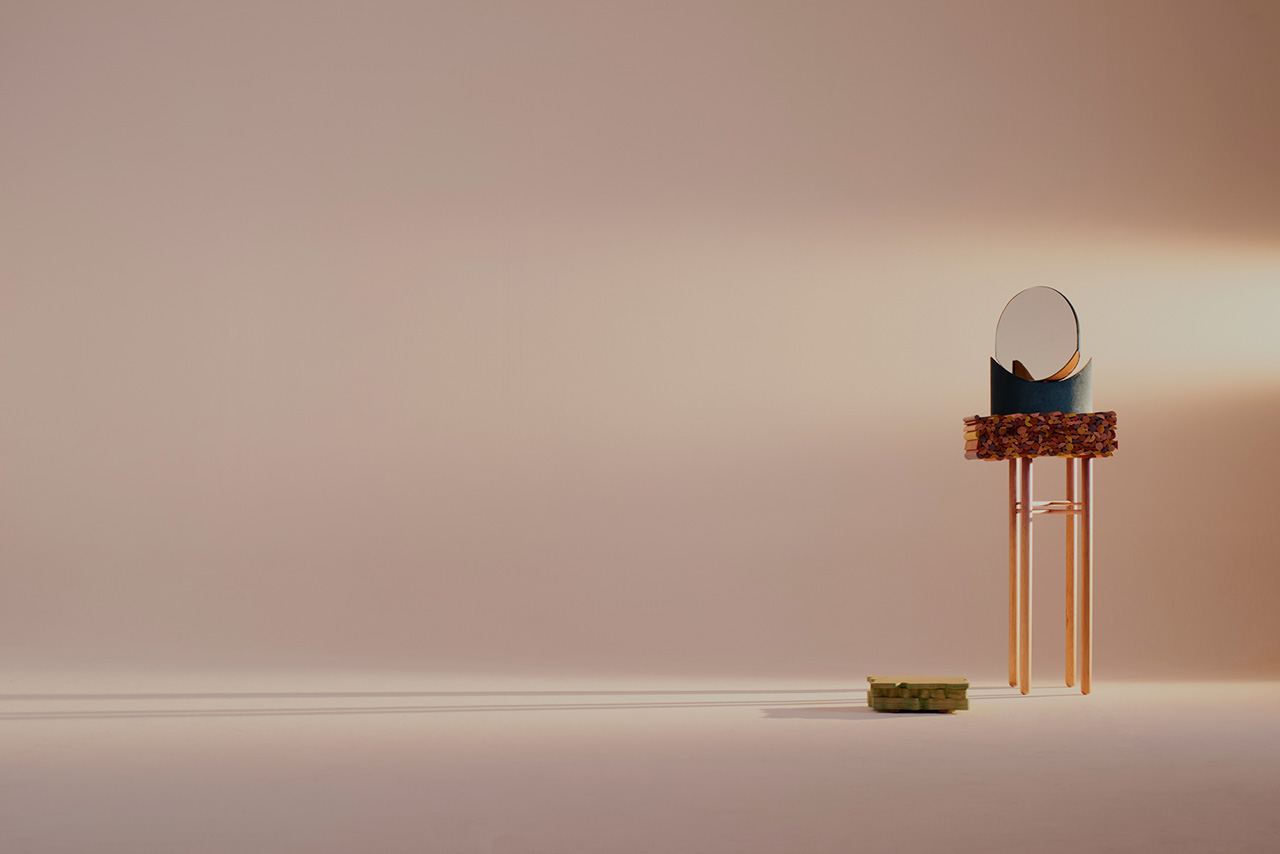
Other Places is in some ways the continuation of a work created in 2017 that also defied easy categorisation. That work, Place, used the same drawer and mirror mechanisms as the distinct works in Other Places, but bound those enigmatic elements together in a sculptural vanity using Tasmanian oak and velvet. All speak directly to an experience of and within the Australian landscape; to the shimmering eucalyptus haze that emanates from the horizon and colours the sky and that vacillates between “this kind of dusty emerald colour to almost magenta” depending on the time of day at which you’re travelling; the “light and gas and dust” that smudges the skyline but falls into sharp relief as you near your destination. “[Other Places is] trying to capture that and make it into something tangible,” says Rich.
To reach that place, Rich of necessity had to embark on something of a radical departure from “the really rational and pared back design that I have been producing in the last decade, which is much more expressive. There were leaps that I made that were instinctual rather than rational, which is really liberating to trust and go with.” As with Weaver, Rich desired that the pieces feel at once alien and inalienable from the landscape; that they be both recognisable but become “their own mythical things” with “their own entity and presence.” Rich made the drawers in collaboration with the Melbourne-based industrial designer Luke Mills, who over several months and with great tenacity adhered together some 10,000 individual pieces of dowel – each one like an unearthed tuber that he hand-finished and coloured in subtle gradations of a colour spectrum drawn from the central Australian landscape but that just as easily recall robust stalks of rhubarb and tamed fistfuls of turmeric.
The results are astonishing, improbable and playful. A similarly magnetic shift occurs when you pull back on one of the drawers, the seams of which are imperceptible from the surrounding wood. They’re an invitation of sorts, not necessarily extended by Elliat Rich alone; an offer to chart a course inward and discover anew the kind of places that can reach out and touch you in return.
Tile and cover image: Courtesy of the National Gallery of Victoria





